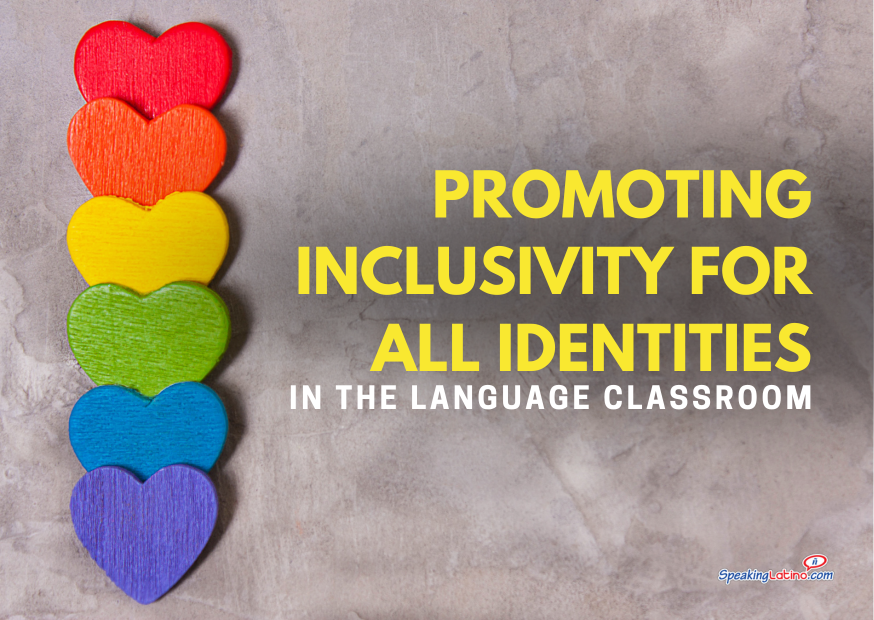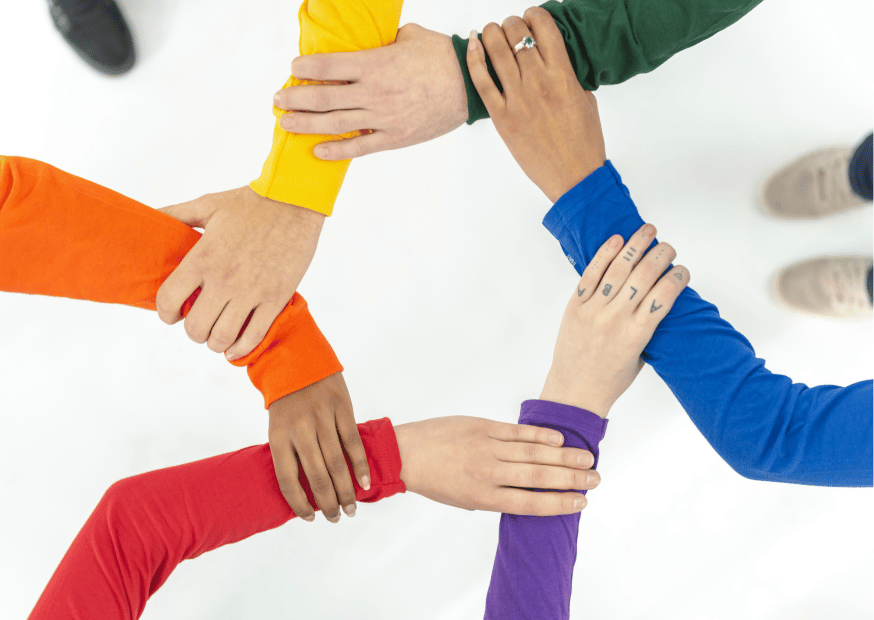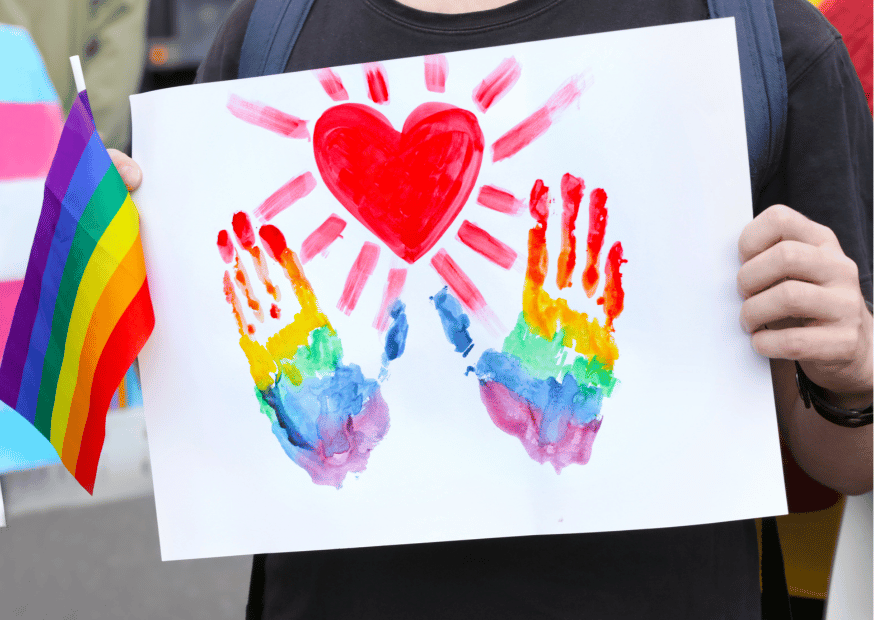
The content of this article is based on the presentation, Linguistic Liberation and Queer Identities in the World Language Classroom by Timothy Chávez, which was part of the World Language Teacher Summit.
Embracing Diversity in Language Learning
In the ever-evolving landscape of education, language classrooms have become pivotal arenas for cultural exchange and the promotion of inclusivity. Amidst this transformation, the integration of queer identities into world language education emerges as a crucial yet complex initiative.
Such efforts aim to dismantle heteronormative paradigms and foster environments where all students, irrespective of their gender identity or sexual orientation, can see themselves reflected and respected.
Let's discuss the various facets of including queer identities in language education, exploring the resistance encountered and advocating for strategies that uphold linguistic liberation and LGBTQ+ inclusivity.
Challenging Early Education Norms
The argument that young students are too immature to grasp queer identities overlooks their continuous exposure to and assimilation of traditional gender roles within society. From animated films to everyday interactions, children are conditioned to recognize and often emulate gender-specific behaviors.
Acknowledging queer identities in the world language classroom does not burden students with complexities beyond their comprehension but rather includes a wider spectrum of human experiences already present in their world.
Gender and Sexual Orientation in Education
Resistance to the inclusion of queer identities in educational settings often stems from their unfounded sexualization. Teaching queer inclusivity is less about focusing on sexual behavior and more about normalizing the variety of human relationships and self-expression. By acknowledging LGBTQ+ individuals and their experiences, educators help to demystify these identities and cultivate a climate of acceptance and dignity for everyone.
Moving Beyond Traditional Authorities
Languages mirror the societies that speak them, evolving to reflect changes in social values and norms. The reluctance to deviate from prescriptive grammatical rules, particularly in the context of gender polarity in languages like Spanish and French, hampers the pursuit of an inclusive communicative environment.
Embracing the fluidity of language is imperative, as is advocating for the development and incorporation of non-binary and gender-inclusive language forms in educational materials and classroom conversations.
Practical Inclusivity Strategies for Teachers
Transforming a language classroom into an inclusive space requires deliberate steps from educators. They are encouraged to employ inclusive language practices like gender-neutral terms and showcase diverse familial structures through images and stories. This doesn't put their professional integrity at risk but instead enriches their teaching by presenting a more authentic and varied human landscape. Integrating queer narratives should become a seamless aspect of language education, highlighting these identities as natural elements of societal fabric.
Expanding Educational Resources to Support Queer Inclusion
Educational materials and professional development opportunities fortify educators' attempts at building inclusive classrooms. Collaborative workbooks, online forums, and consistent engagement with scholarly work on queer inclusivity serve as invaluable supports. These resources also play a crucial role in bolstering educators' resilience against pushback from administrative and familial sources, guiding them towards impactful yet diplomatically sensitive approaches.
Celebrating Cultural Richness and Identity
Language teaching is as much about conveying vocabulary and grammar as it is about imparting an understanding of cultural contexts. The recognition of culturally specific gender identities, such as the Muxes of Mexico, and the thoughtful discussion of non-binary and queer family structures across various tongues enhance the language-learning experience.
By exploring these topics, teachers help cultivate open-mindedness and a genuine appreciation for the diverse ways in which humans express their identities.
Confronting Grammatical Conventions
The inherently gendered nature of Romance languages poses particular challenges for inclusivity. Nevertheless, it is crucial to explore and implement strategies such as utilizing gender-neutral endings and constructing sentences that acknowledge all gender expressions. These efforts reflect the living nature of language—constantly adapting to better serve the communicative needs of its speakers.
Allies in Linguistic Liberation
As they strive to integrate non-binary pronouns and inclusive terminologies into their curriculum, educators must often grapple with the lack of precedents and potential hesitancy from their professional communities. To navigate these waters, fostering networks of language teachers committed to inclusivity can provide support and courage. Sharing knowledge, strategies, and success stories can reinforce educators' resolve to create welcoming classrooms for all students.

From animated films to everyday interactions, children are conditioned to recognize and often emulate gender-specific behaviors
Celebrating Queer Joy
In their quest to shape inclusive classrooms, teachers must balance narratives about the LGBTQ+ community. It is fundamental to highlight not only the adversities but also the triumphs and joy inherent in queer life. By recognizing the full spectrum of queer experiences, educators foster a more nuanced understanding and a greater connection among all students.
FAQs About Linguistic Liberation in Language Learning
How can teachers incorporate themes of diversity into their Spanish language curriculum?
Teachers can incorporate themes of diversity into their Spanish language curriculum by:
- Including diverse cultural content: Integrate materials, literature, and media from a variety of Spanish-speaking countries to showcase the diversity within the Spanish-speaking world.
- Incorporating diverse perspectives: Include voices and experiences of individuals from different backgrounds, ethnicities, and identities in language activities and discussions.
- Addressing social issues: Discuss topics such as social justice, equality, and human rights in the Spanish language classroom to raise awareness and promote empathy.
- Celebrating cultural traditions: Explore and celebrate various cultural traditions, holidays, and customs from Spanish-speaking countries to foster appreciation for different cultures.
- Encouraging language exchange: Facilitate language exchange programs or partnerships with Spanish-speaking communities to provide students with real-world exposure to diverse linguistic and cultural contexts.
- Integrating inclusive language: Teach students about inclusive language practices, including gender-neutral language and respectful terminology for addressing diverse identities.
- Promoting multicultural awareness: Organize multicultural events, guest speakers, or cultural workshops to expose students to different perspectives and experiences within the Spanish-speaking world.
- Incorporating diverse literature: Include literature written by authors from diverse backgrounds, including LGBTQ+, indigenous, Afro-Latinx, and other marginalized communities, to broaden students' literary exposure.
- Emphasizing global citizenship: Encourage students to explore global issues, engage in cross-cultural dialogues, and develop a sense of responsibility as global citizens within the Spanish language learning context.
- Providing opportunities for student expression: Create platforms for students to share their own cultural backgrounds, experiences, and perspectives through projects, presentations, and creative assignments in the Spanish language curriculum.
What are some practical strategies for helping students feel seen and heard in the classroom?
Some practical strategies for helping students feel seen and heard in the classroom, include:
- Ensuring representation: Make an effort to include diverse voices, experiences, and identities in classroom materials, discussions, and activities to reflect the diversity of the student body.
- Creating a welcoming environment: Establish a classroom culture that values and respects all students, regardless of their background, identity, or beliefs, to foster a sense of belonging and inclusivity.
- Encouraging participation: Actively encourage all students to contribute to discussions, share their perspectives, and engage in classroom activities to ensure that every voice is heard and valued.
- Providing opportunities for self-expression: Offer platforms for students to express themselves creatively through writing, art, presentations, or other means to showcase their unique identities and experiences.
- Using inclusive language: Be mindful of using gender-neutral language, respectful terminology, and inclusive pronouns to create a safe and affirming space for all students in the classroom.
- Incorporating diverse perspectives: Integrate diverse perspectives, cultural references, and representations into the curriculum to broaden students' understanding of different identities and experiences.
- Addressing bias and discrimination: Address instances of bias, discrimination, or microaggressions in the classroom promptly and sensitively to ensure that all students feel respected and supported.
- Building community and empathy: Foster a sense of community among students by promoting empathy, understanding, and mutual respect for each other's differences and similarities.
- Providing individual support: Offer individualized support, feedback, and guidance to students to address their unique needs, challenges, and strengths in the learning process.
- Celebrating diversity: Celebrate and acknowledge the diversity within the classroom through multicultural events, projects, and discussions that highlight the richness of different cultures, backgrounds, and identities represented among students.

Teaching queer inclusivity is less about focusing on sexual behavior and more about normalizing the variety of human relationships and self-expression.
How can diverse perspectives be integrated into the world language classroom effectively?
Diverse perspectives can be integrated into the world language classroom effectively by:
- Curating Diverse Learning Materials: Selecting a variety of authentic resources, such as literature, films, music, and news articles, from different Spanish-speaking countries and cultural backgrounds to expose students to diverse perspectives.
- Inviting Guest Speakers: Organizing virtual or in-person sessions with guest speakers from diverse backgrounds to share their experiences, insights, and cultural perspectives with students.
- Facilitating Cross-Cultural Exchanges: Arranging language exchange programs or pen pal initiatives with students from Spanish-speaking countries to provide authentic interactions and exposure to diverse perspectives.
- Incorporating Multicultural Projects: Assigning projects that require students to research and present on various cultural aspects, traditions, and historical events from different Spanish-speaking regions.
- Encouraging Critical Thinking: Promoting critical analysis and discussion of cultural differences, social issues, and historical events to broaden students' understanding of diverse perspectives within the Spanish-speaking world.
- Exploring Contemporary Issues: Integrating discussions on current events, social movements, and global issues relevant to Spanish-speaking communities to engage students in conversations about diverse perspectives and experiences.
- Promoting Empathy and Understanding: Encouraging students to empathize with different viewpoints, challenge stereotypes, and appreciate the complexity of diverse perspectives through open dialogue and reflection.
- Using Culturally Relevant Language Activities: Designing language activities that incorporate cultural references, idiomatic expressions, and linguistic nuances specific to different Spanish-speaking regions to immerse students in diverse linguistic contexts.
- Celebrating Cultural Festivals and Holidays: Recognizing and celebrating cultural festivals, holidays, and traditions from various Spanish-speaking countries to expose students to the richness and diversity of Hispanic cultures.
- Creating Inclusive Classroom Norms: Establishing inclusive classroom norms that value and respect diverse perspectives, identities, and backgrounds to foster a supportive and inclusive learning environment for all students.
Embracing Our Shared Humanity in Language Education
The journey to establish linguistically liberated classrooms that honor LGBTQ+ identities is vital to the narrative of contemporary education. The inclusion of queer identities and the use of inclusive language within world language teaching are at the heart of educating empathetic, socially aware individuals.
Through the collective effort of educational professionals who courageously share insights and confront traditionalist ideologies, educators can carve out spaces that matter, that represent, and that celebrate the diversity of human experience. An expansive, inclusive language classroom not only benefits those whose identities have been marginalized but also enriches the lives of all learners, fostering universal respect and understanding.
Discover more language teaching techniques to help you in your classroom.